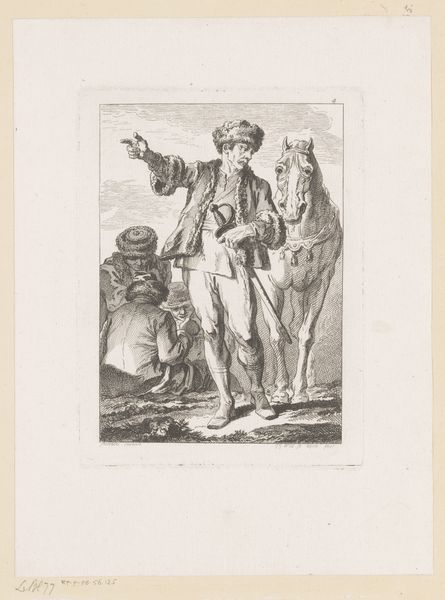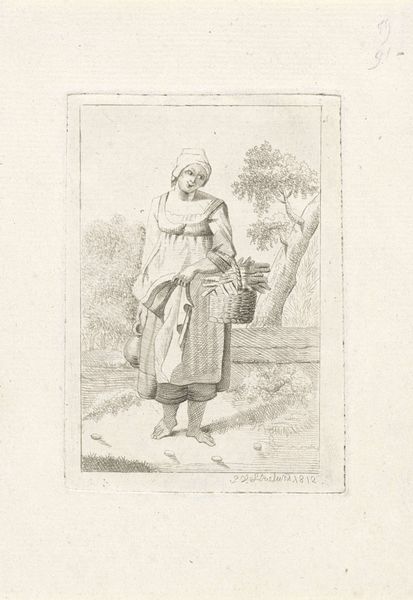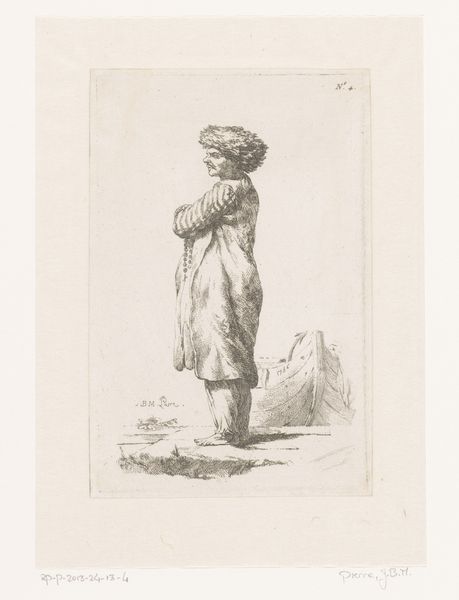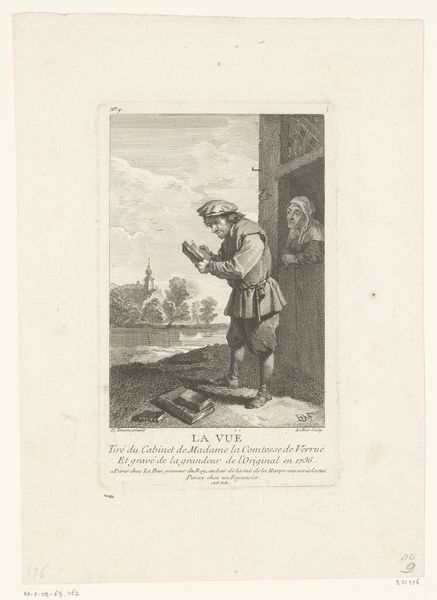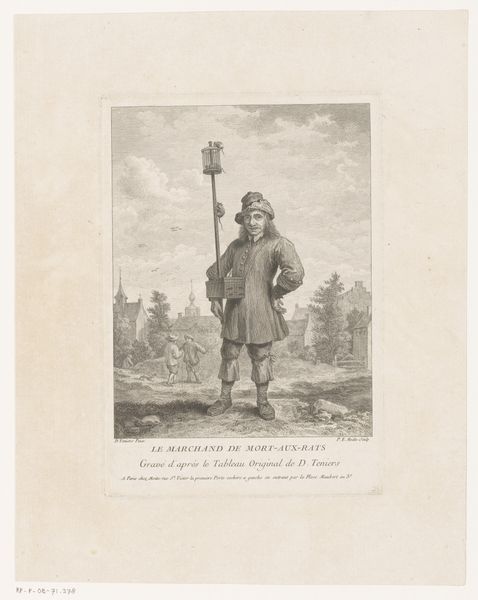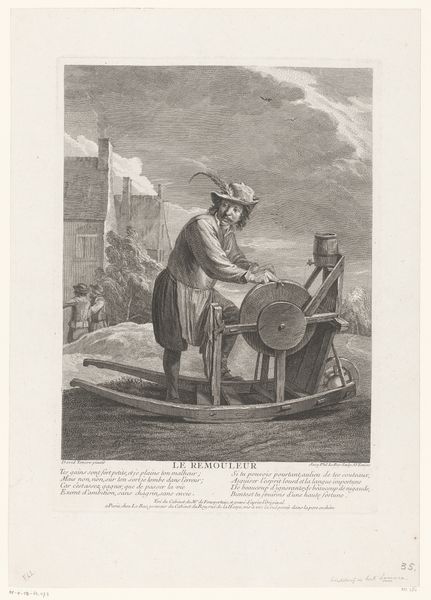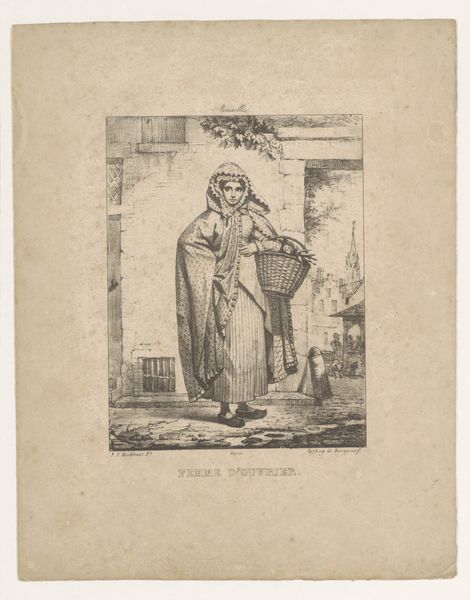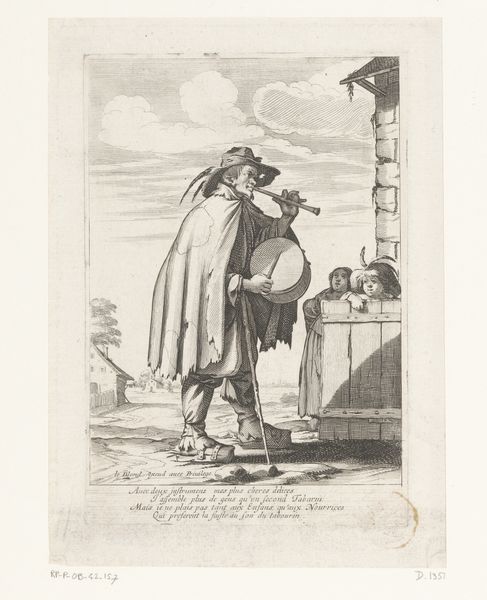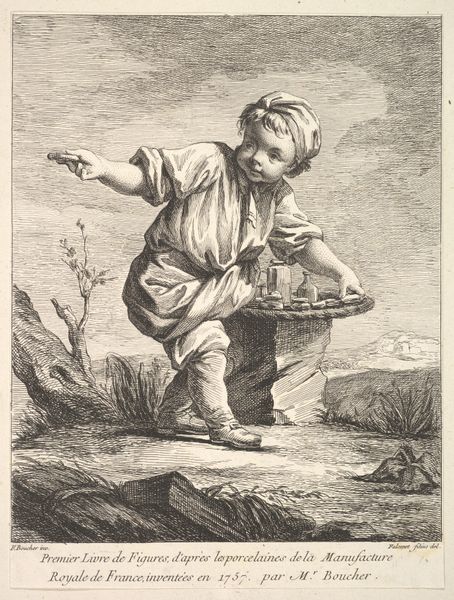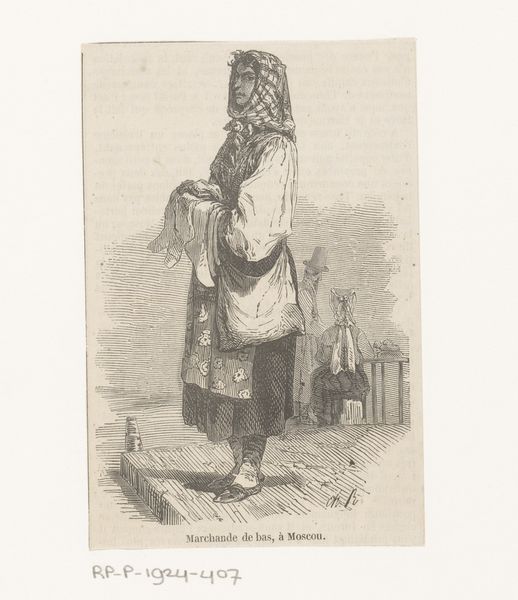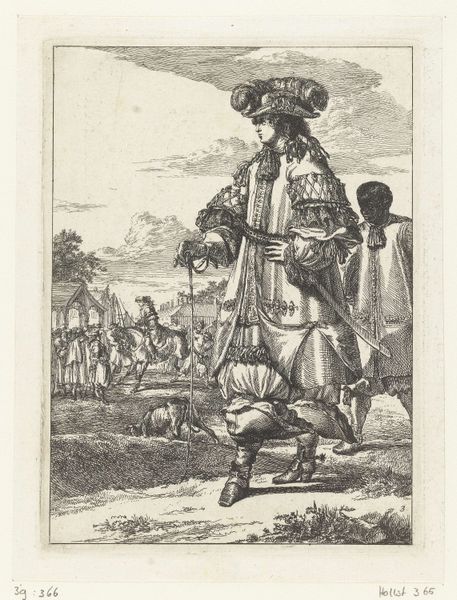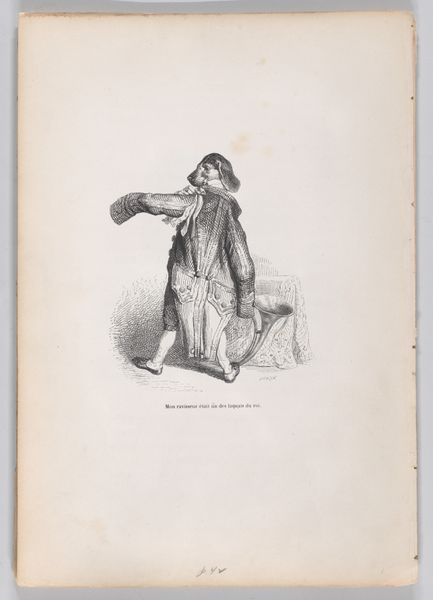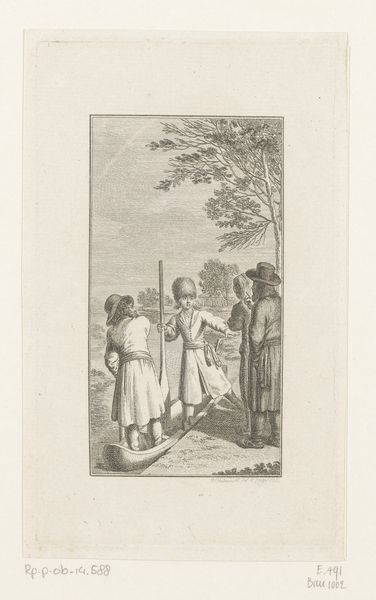
print, paper, engraving
#
portrait
#
ink paper printed
#
parchment
# print
#
figuration
#
paper
#
line
#
genre-painting
#
engraving
#
rococo
Dimensions: height 216 mm, width 177 mm
Copyright: Rijks Museum: Open Domain
Curator: Here we have "Verkoper van Limonade," or "Lemonade Seller," an engraving on paper created by Jean Baptist Leprince in 1765. Editor: There's something strikingly earnest about this image. The direct gaze of the lemonade seller, his offering, it feels both familiar and distant. Curator: Leprince was known for his genre scenes depicting everyday life. This particular piece provides insight into the social dynamics of the 18th century, especially regarding commerce and labor. Look at the background. Editor: Yes, the setting hints at a bustling port town. We see potential customers, boats docked in the background – it emphasizes the seller’s reliance on trade and urban activity. The vessels perhaps reference global trade networks that would bring ingredients for lemonade, like lemons and sugar. Curator: The man's clothing indicates a certain class, doesn’t it? While seemingly humble, there is also a degree of self-respect present, conveyed through his upright posture. What I find interesting, however, is the depiction of other laborers in the background as a collective, whereas this central figure has been made individual. What do you make of that? Editor: It makes me think of archetypes – the image transcends its immediate context to represent vendors, not only across borders, but across historical eras, too. Note how carefully Leprince renders the details on his jug, almost inviting the viewer to experience refreshment through observing the texture of clay and the curve of the pouring spout. It appeals directly to a psychological sense memory. Curator: I suppose the enduring appeal stems from how the symbolism of sustenance and offering is embedded within a very particular moment of French social history, opening conversations about class, identity and economics even today. Editor: Agreed, that it invites sustained reflection – after all, isn't lemonade symbolic of transforming the sourness of life into something more palatable? I suspect it continues to touch on themes universally understood, which speaks volumes about its lasting power.
Comments
No comments
Be the first to comment and join the conversation on the ultimate creative platform.
